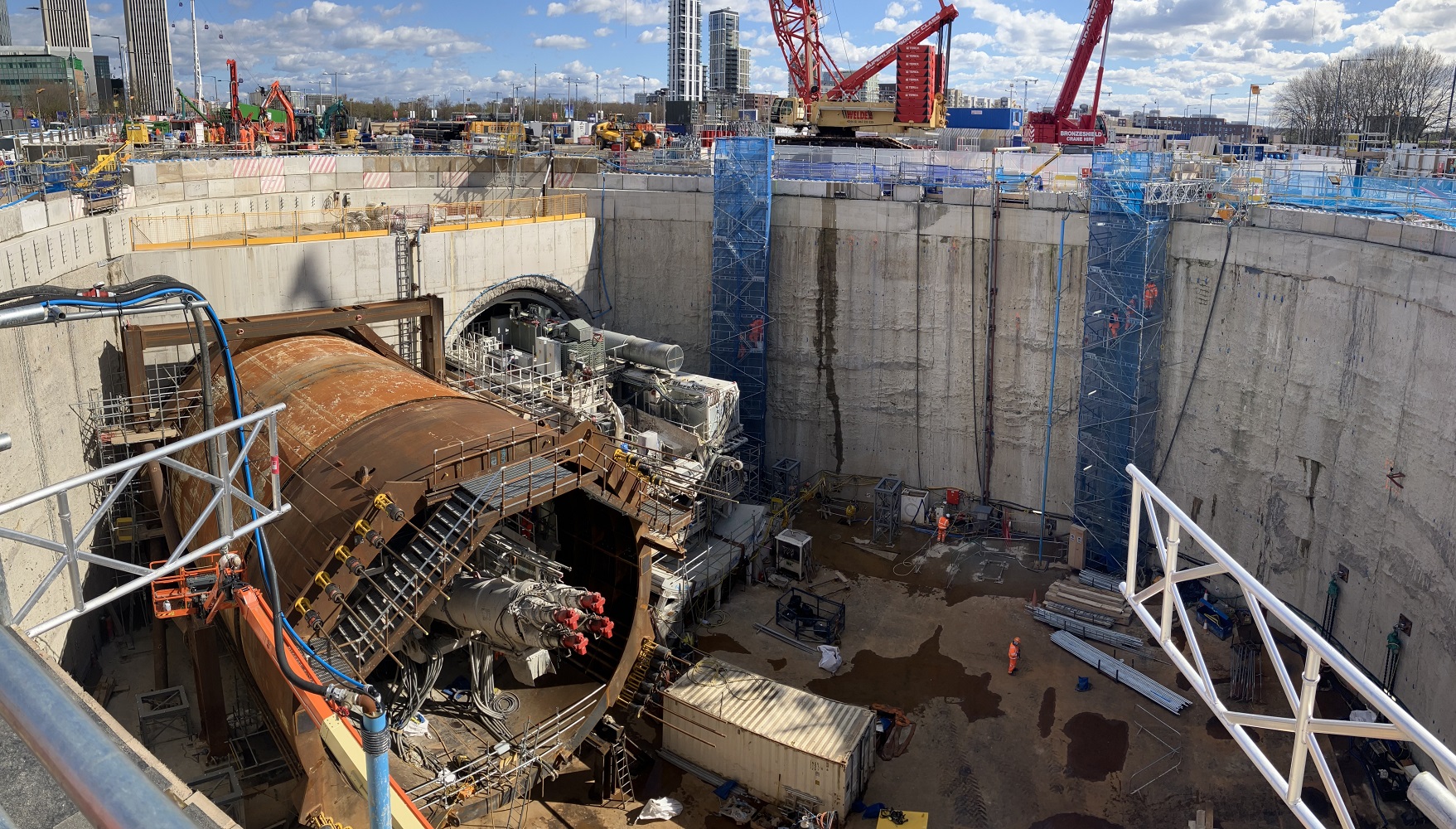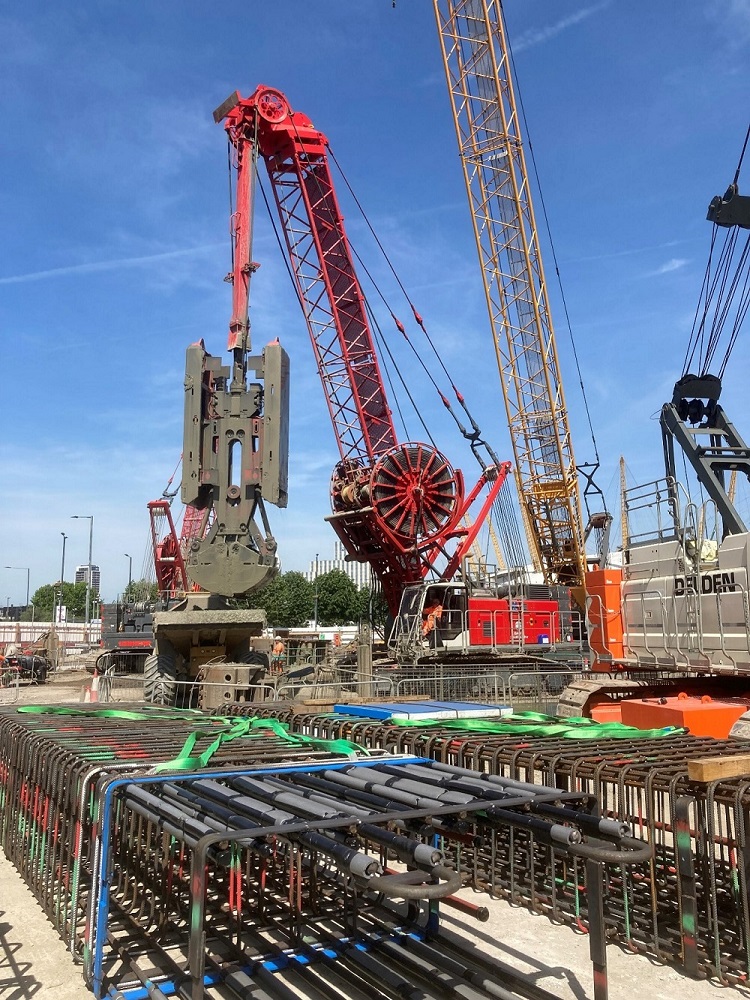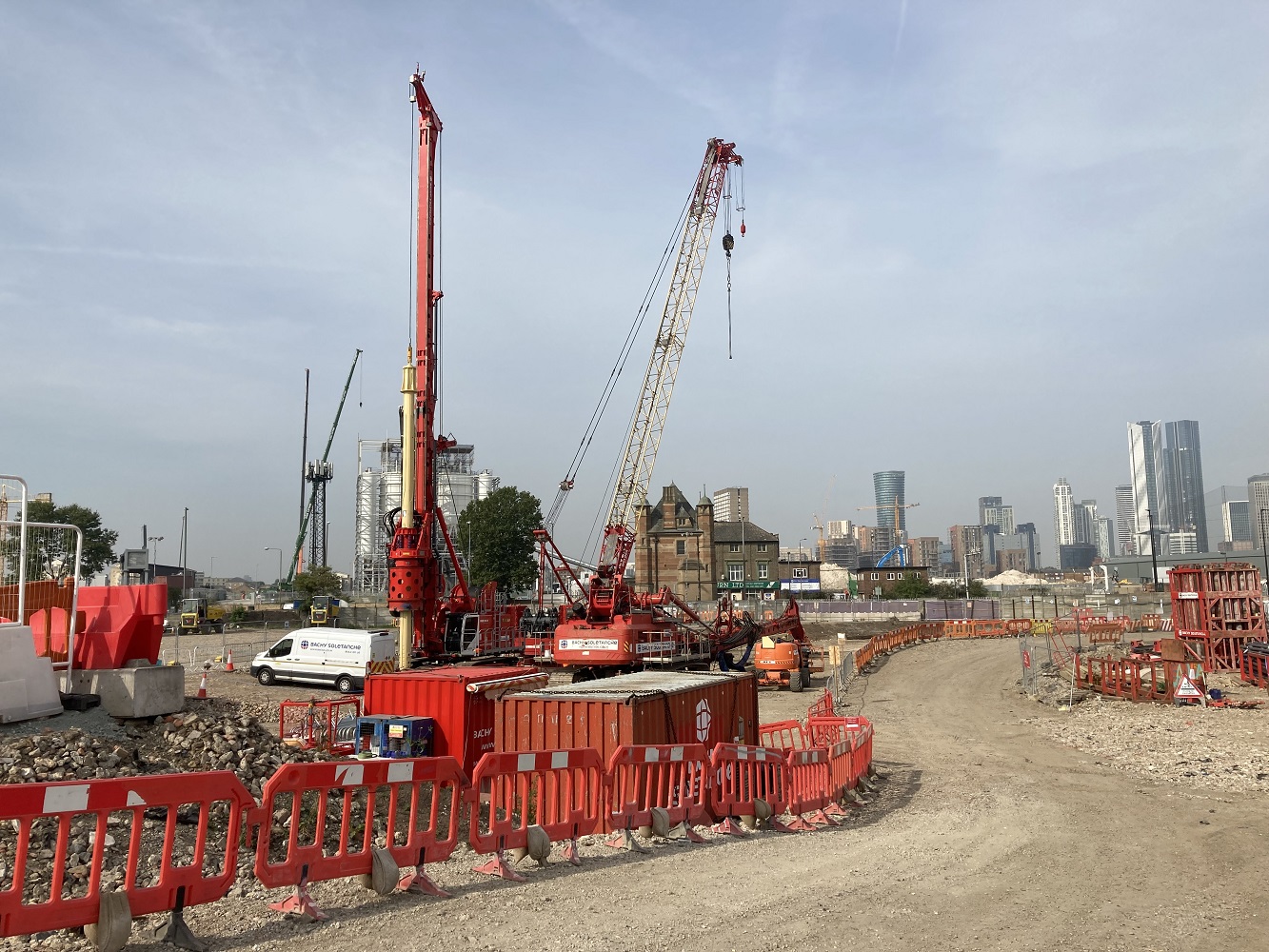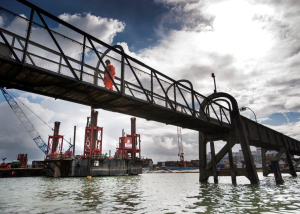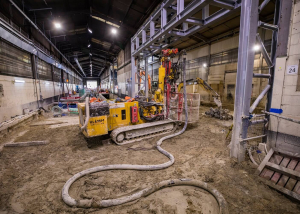THE SCHEME
Due for completion in 2025, the Silvertown Tunnel will be a 1.4km twin-bore road tunnel running under the River Thames, connecting Silvertown to the Greenwich Peninsula. The additional route is set to ease chronic congestion at the Blackwall Tunnel and enable more cross-river bus journeys.
DESIGN AND GROUND CONDITIONS
Bachy Soletanche’s team proposed a diaphragm wall solution for the Rotation Chamber in lieu of the originally specified secant piled wall. Additionally, the team was responsible for detailing and producing all the reinforcement fabrication drawings from the Riverlinx CJV’s design intent drawings for the Riverlinx CJV’s acceptance. Bachy Soletanche was also responsible for the determination and design of the concrete mixes.
PILING OPERATIONS
South Portal
For the tunnel’s South Portal, Bachy Soletanche constructed a hard/hard secant wall comprising piles that are 1,500mm in diameter and bored up to 30m deep. These are some of the largest and deepest secant piles that the company has ever installed. As all piles are reinforced, the team procured butterfly shaped cages for the primary piles to make space for the intersecting secondary piles.
In addition to this, the team constructed soldier piles, which are 880mm in diameter and bored to depths of 30m. All South Portal piles were constructed using full-length, temporary segmental casing and bentonite support fluid due to unstable ground conditions.
To create a watertight seal between the South Portal’s secant wall and an adjacent sheet piled wall, Bachy Soletanche constructed a number of jet grout columns (1,000mm dia., 10m depth), using a Shape Accel Array to monitor accuracy and deviation.
Open Cut and Overbridge
To support a new overbridge, the team installed soft concrete ground treatment piles (up to 1,200mm dia., 10-12m depth), which are arranged in a secant honeycomb grid using CFA and cased CFA techniques.
Adjacent to this, Bachy Soletanche constructed a secant wall comprising hard/hard piles, which are 1,300mm in diameter and bored to an average depth of 24m. All piles were constructed under bentonite support fluid with full-length temporary segmental casing and reinforcement.
Rotation Chamber
To form the Rotation Chamber, Bachy Soletanche constructed a diaphragm wall shaft comprising 24 panels that are up to 1,500mm thick and 31m deep. The wall was constructed using a combination of three and five-bite excavations under bentonite support fluid, with couplers fitted to each cage.
To reduce the permeability of the soil outside the shaft, the team constructed low-strength CFA piles arranged in a secant honeycomb layout. The piles are 1,200mm in diameter and bored to depths of 17m.
Additional work
Further to this, Bachy Soletanche constructed some smaller sections of work, including eight CFA piles for a Millennium Way Temporary Bridge (1,050mm dia., 20m depth) and CFA piles for the Control Building (750mm dia., up to 22m depth). To support part of a new footbridge and associated gantries, Bachy Soletanche also constructed CFA piles (900mm dia., average depth of 20m).
AWARD WINNING INNOVATION
During the programme, Bachy Soletanche designed and manufactured a mechanical tool that is able to retrieve lost casing from a borehole. The innovation provides a much safer method for casing recovery as it avoids the need for an employee to enter the borehole. In 2021, it was shortlisted for two Ground Engineering Awards and won the Special Jury Prize in the VINCI Environment Awards.
SUSTAINABILITY
Bachy Soletanche monitored fuel usage throughout the project and integrated electrical equipment into its setups wherever possible, including electric pumps in its bentonite farms. The company also worked with its supply chain partners to design and procure low-carbon concrete and grout mixes.
COLLABORATIVE WORKING
This was a demanding scheme, which at its peak required 24-hour working and saw up to five rigs operating on site simultaneously. Along with employing an experienced team, Bachy Soletanche had to collaborate closely with Riverlinx CJV and their designers to ensure the safe and successful delivery of work.
